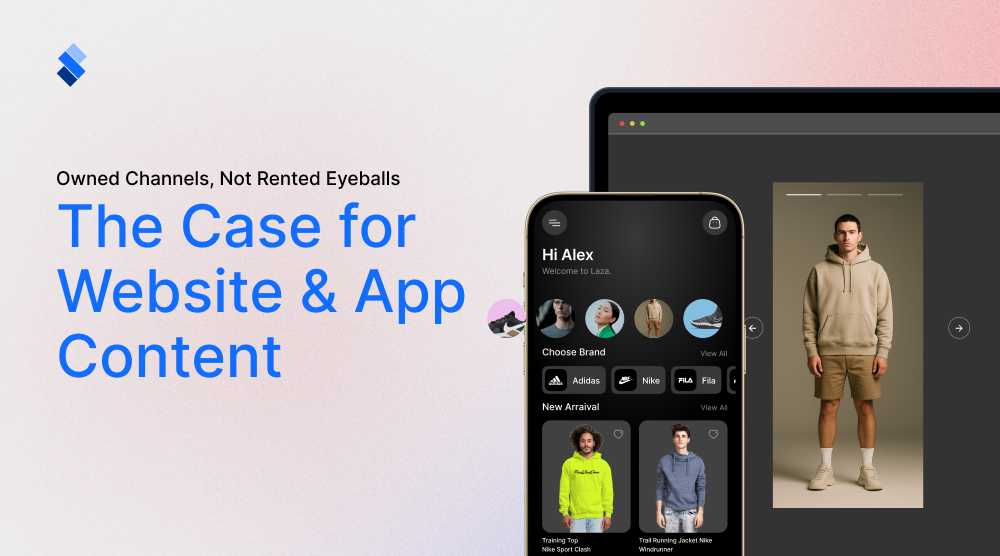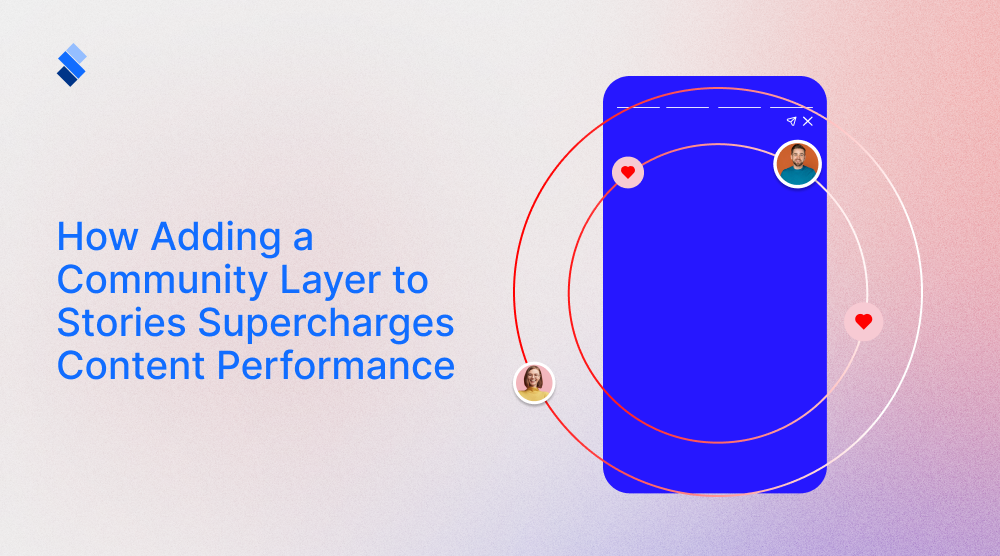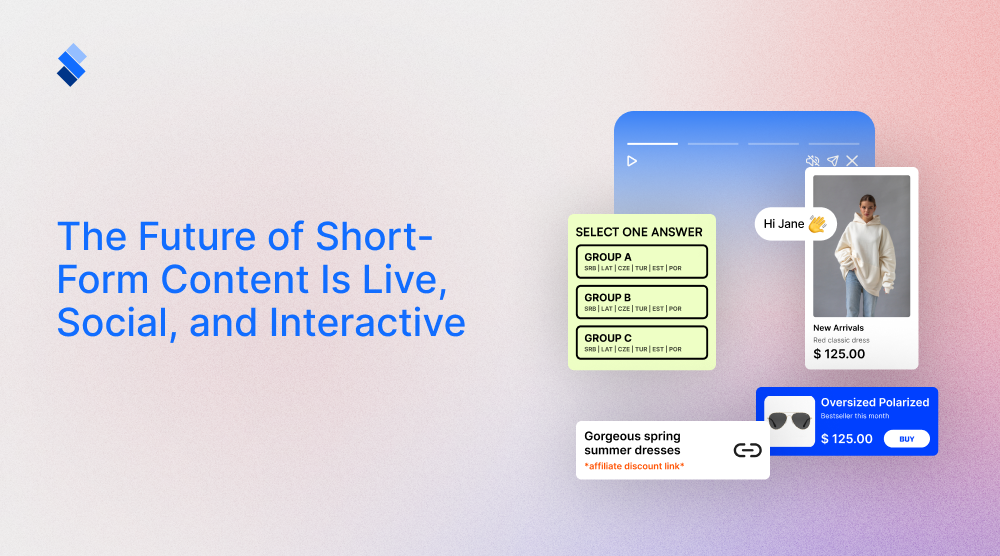Why Static Content Isn’t Enough: How Community-Driven Experiences Boost Retention
Community-driven content can be quite useful for both customer retention and engagement strategies. Just as long as you approach it in the right way.

An average publisher needs to spend 7x more to acquire a new visitor then to retain an existing one. Does this mean that a new visitor will bring more revenue? Far from so. A returning visitor will spend 55% more time on-site and is 5 times more likely to engage with content. These number not only highlight the foolishness of constantly trying to find new customers, but also highlight the importance utilizing engagement strategies to improve retention rates. An often misunderstood aspect in this task are community-driven experiences. These, when properly used, they can not only engage customers, but change their perspective of the brand as a whole. So, in this article, we will take a closer look at community-driven content and showcase how it can help boost retention.
Static content in modern age
Static content (blog posts, long-form articles, videos, and pre-recorded stories) once ruled digital strategy. Even today, when we say content, we tend to primarily think of static. But in today’s saturated content landscape, static content is becoming less and less effective. Even the most polished stories or branded visuals can feel flat without one key element: interactivity. With interactivity come both engagement and retention rates that static content cannot keep up with.

The biggest problem with static content is that it doesn’t invite participation. Without participation, it is highly questionable how much a user will engage with the content. Especially if we are talking about a more long-term engagement. Readers tend to consume static content and move on, often without commenting, subscribing, or returning. This passivity is a silent killer of customer retention as without meaningful interaction, your brand fades into the background.
Utilizing static content
You can still leverage static content effectively by ensuring it provides value information, that the information is evergreen, and that it is optimized for search. Think in-depth guides, data-driven reports, or curated resource libraries. You can always look to repurpose static content into multiple formats (e.g., infographics, social snippets, or podcast segments) and promote it within interactive spaces like community forums or live discussions, where it can spark deeper engagement. Additionally, integrating smart CTAs (e.g., "Join the debate in the comments!" or "Take our quiz to test your knowledge!") bridges the gap between passive consumption and active participation. All this to say that static content isn’t something you need to outright forgo. Instead, you need to combine it with interactive formats, like community-driven content.
The importance of community-driven content
Although static content still has a role to play, that role is slowly diminishing. In today's oversaturated digital landscape where consumers instinctively tune out traditional advertising, community-driven content has emerged as the most powerful way to cut through the noise. Know that this is far more than just another marketing tactic. It is a fundamental shift in how brands build meaningful, lasting relationships in an era where consumers crave authentic connection over polished messaging. We can easily consider the ongoing period as the evolution of marketing from one-way communication to a more collaborative, participatory experience.

But what makes community-driven content such a monumental shift? Well, there are a couple of factors that all contribute to the rising importance of community-oriented experiences, especially when it comes to customer retention.
Building trust in the age of skepticism
Modern consumers have developed what researchers often call "promotional blindness.” This means that consumers automatically filter out anything that feels like advertising. In this environment, peer recommendations carry dramatically more weight than brand messaging. Several studies show that recommendations from real community members are trusted nearly 3x more than traditional advertising. This explains why brands like Harley-Davidson and Peloton have built incredibly loyal followings by fostering tight-knit communities rather than relying on conventional marketing. When customers become advocates within these communities, they create social proof that no amount of advertising budget can compete with.
The engagement advantage
The numbers paint a clear picture of community content's superior performance. While traditional social media posts struggle to maintain relevance beyond a few hours, community-driven interactions sustain engagement over much longer periods. This extended engagement window creates more opportunities for meaningful interactions that deepen customer relationships. Platforms designed for community interaction consistently show users spending significantly more time engaged with content compared to passive consumption platforms. Perhaps most importantly, this heightened engagement translates directly to business results, with community members demonstrating substantially higher retention and lifetime value.
The organic growth engine
One of the most compelling aspects of community-driven approaches is their ability to create self-sustaining marketing ecosystems. Unlike traditional campaigns that require continuous investment to maintain visibility, vibrant communities naturally generate their own content and word-of-mouth promotion. This user-generated content not only performs better in terms of engagement metrics but also carries more credibility with potential customers. The most successful brands have learned to harness this effect by creating frameworks that encourage and amplify community contributions, turning their most passionate customers into an always-on marketing force.

Real-time market intelligence
Beyond their marketing benefits, brand communities serve as invaluable sources of customer insight. These platforms provide an ongoing stream of unfiltered feedback that traditional research methods struggle to match. Companies leveraging community insights gain access to a level of customer understanding that would be prohibitively expensive to obtain through conventional market research. This real-time feedback loop allows for faster iteration and more customer-centric decision making across the organization, from product development to customer service.
Algorithm-friendly content
The changing nature SEO algorithms has made community-driven content increasingly valuable from a purely technical standpoint. Platforms increasingly prioritize content that generates genuine interaction and conversation, exactly the kind of engagement that community-focused initiatives excel at creating. This algorithmic advantage creates a virtuous cycle where community content earns greater visibility, which in turn attracts more participants to the community. Brands that master this dynamic find their organic reach growing even as paid channels become more crowded and expensive.
Real-world applications
Let’s imagine two scenarios with the same story. One will be a static story. The other will be a community-driven one. Try to notice the differences.
Scenario A: You publish a gripping story about a woman overcoming laziness and starting to a running schedule which yields results after a couple of months (loss of fat, better energy leves, etc..). Readers scroll, maybe nod in agreement, then click away.
Scenario B: The same story includes a live chat sidebar. As readers move through the story, they see others sharing similar experiences. Someone asks what diet did the protagonist commit to. Another shares common misconspetions about running, and how people can injure themselves. Suddenly, the article becomes a live support group, and your brand is at the center of it.
Which version do you think readers will remember and return to?
Engagement strategies to utilize with live chat
While simply integrating live chat within your story content is a valid option, you might want to employ certain engagement strategies. After all, live chat has evolved from a basic customer service tool into a dynamic engagement platform. When strategically layered with complementary tactics, it transforms passive interactions into vibrant, community-building experiences. The most innovative brands are going beyond simple Q&A to create immersive, real-time engagements. These not only drive deeper connections, but also produce notable business results and improved retention rates.
Gamification for sustained participation
We’ve written before how useful gamification can be when applied to modern digital engagement. Well, live chats are no exeption. Integrating game mechanics into live chat creates addictive engagement loops that keep users coming back. Leaderboards, achievement badges, and real-time challenges turn ordinary conversations into compelling experiences. Twitch streamers have mastered this approach, using live chat games and prediction markets to boost average watch times by 40%.

Brands can adapt these techniques by rewarding active participants with exclusive perks or recognition, creating a virtuous cycle where engagement breeds more engagement.
Co-creation through collaborative dialogue
Forward-thinking companies are using live chat as a collaborative workshop space rather than just a support channel. By inviting users to contribute ideas, vote on features, or help solve problems in real time, brands tap into collective intelligence of their users. This can not only help in making business decisions, but also makes participants feel valued. This approach mirrors the success of open-source communities where contributors develop deep loyalty through participation. The key lies in structuring these sessions to yield actionable insights while making every contributor feel heard.
AI augmentation
Hosing a single live chat (let alone multiple) would be impossible without AI help. The amount of spam, bot attacks and troublesome customers you have to handle far outweighs physical capabilities of even the best moderators. Luckily, modern AI make handling live feeds far easier.

They also allow brands to scale personalized interactions within live chat environments. By analizing participant history and preferences in real time, systems can serve tailored content, product recommendations, or discussion prompts. This technology-enabled personalization achieves the intimacy of a small community at scale. As such, it has pretty much revolutionized online search and shopping. The most effective implementations balance automation with human interaction, using AI to enhance rather than replace genuine connection.
Event-driven engagement peaks
Strategic scheduling of live chat sessions around key moments creates natural engagement spikes. These could tie to product launches, industry events, or even cultural moments. The approach mirrors the success of live-tweeting during major broadcasts, where shared experiences fuel conversation. Brands that master this timing see 3-5x higher participation rates compared to standalone chat sessions, with the added benefit of tapping into existing audience energy.
Cross-platform conversation threading
Breaking free from single-channel limitations, progressive brands are weaving live chat interactions across multiple platforms. A discussion started in a webinar chat might continue in a branded community, then spill over into social media. This omnichannel approach mirrors natural human communication patterns and significantly extends engagement windows. The most successful implementations use consistent threading techniques and clear transition prompts to maintain conversation continuity.
Expert-led deep dive sessions
Periodic appearances by subject matter experts transform routine chat into must-attend events. These sessions work particularly well when paired with advance Q&A collection and follow-up content creation. The model follows the success of AMA (Ask Me Anything) formats on platforms like Reddit, where specialized knowledge draws concentrated engagement. Brands that curate their expert sessions well see participants returning specifically for these knowledge-sharing opportunities.
Final thoughts
To thrive in today’s digital world, you need to stop thinking like a content creator and start thinking like a community host. Your role isn’t just to inform or entertain. Instead, you need to facilitate meaningful experiences around your content. That shift, helped by live, interactive features, can dramatically improve your content retention and long-term audience growth. So if your engagement strategies still rely on static formats, now’s the time to level up. Turn your content into a conversation. Your audience is ready to talk. Let StorifyMe enable you to listen and respond.







